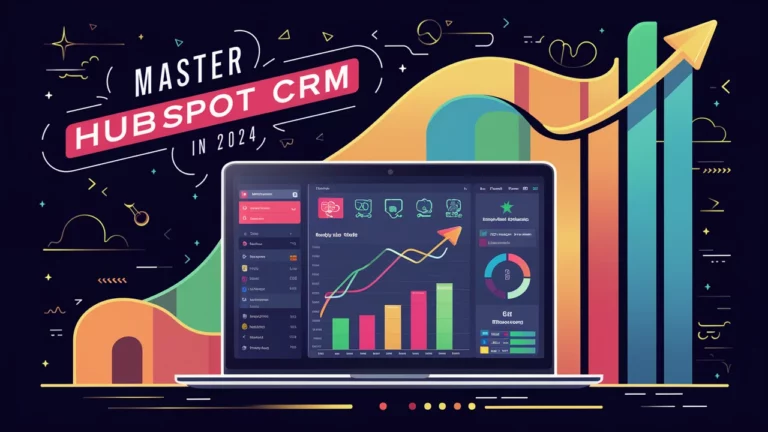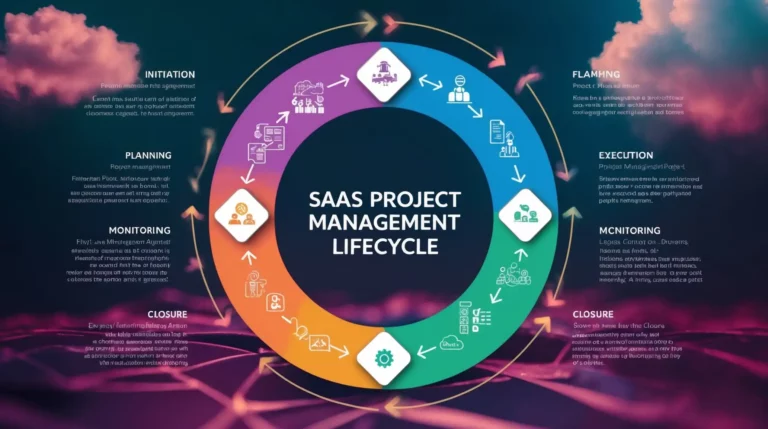The Ultimate Guide to Startup SaaS Financial Models

Building strong SaaS financial models is essential for startups venturing into the software-as-a-service (SaaS) industry. It is an exciting journey, but not without financial challenges. One crucial aspect that every startup needs to tackle is creating a solid economic model to guide its operations and decision-making process.
- Key Takeaways
- Introduction
- What Makes a Good Financial Model for SaaS Startups?
- Metrics and Reporting
- What are the Main Types of Financial Models?
- Revenue and Forecasting
- The SaaS Startup Financial Model Template – Google Sheets and Excel Templates
- Using a SaaS Financial Model Template in Excel
- Conclusion
- FAQ
Our audience supports Ahcrypto. When you click on the links on our site, we may earn an affiliate commission at no extra cost to you. Learn More.
Key Takeaways
Introduction
Financial models serve as the blueprint for a company’s financial performance, helping to forecast revenue, expenses, and cash flow. In the realm of SaaS businesses, these models are even more critical due to the recurring revenue streams and unique metrics associated with this industry.
Understanding Financial Models
A financial model is a tool for forecasting a company’s future financial performance based on historical data, assumptions, and projections. It typically includes a cash flow statement, balance sheet, and revenue model to provide a comprehensive view of the company’s financial health.
Importance of SaaS Financial Models for Startups
An accurate financial model is essential for understanding a Sacompany’sp’s financial position, predicting cash flow, and evaluating the overall business model. It helps founders make informed decisions, secure funding, and ensure the business’s long-term sustainability.
Overview of Forecasting
Forecasting plays a vital role in financial modeling, allowing startups to predict future performance based on current trends and market conditions. Using forecasting techniques, SaaS companies can anticipate revenue growth, identify potential risks, and strategically adjust their business strategies.
What Makes a Good Financial Model for SaaS Startups?
Building a robust financial model for a Startup SaaS venture involves crucial considerations. It should accurately forecast revenue, expenses, and cash flow while reflecting the unique metrics of the SaaS industry. This model acts as a guiding framework for financial performance, aiding decision-making and strategic planning.
Metrics and Reporting

Understanding metrics and reporting in the context of SaaS (Software as a Service) requires familiarity with various financial tools and documents. At the heart of this analysis lies the financial statements, forecast, and the ability to build an economic model. Specifically, knowing how to make SaaS Financial Models is crucial for SaaS companies. These models efficiently project SaaS revenue, incorporating SaaS metrics that are unique to SaaS businesses. They typically merge the three financial statements into a cohesive three-statement model, which is essential for any SaaS business planning to secure funding or manage to spend wisely.
The critical components of SaaS Financial Models include detailed financial projections and a robust financial forecast model. Utilizing tools like Excel or Google Sheets, the models may feature different economic models, such as an operating expense or a headcount planning financial model. Mastery in creating these versatile SaaS Financial Models for a SaaS company can significantly help your SaaS navigate the complexities of scaling, especially in the competitive B2B SaaS market.
Furthermore, for anyone looking to build their SaaS financial expertise, it’s essential to know about SaaS financial fundamentals and the different types of SaaS, ranging from simple applications to complex enterprise solutions. Companies can anticipate future financial needs through strategic SaaS forecasting and adapt their strategies accordingly. This is where robust and accurate SaaS Financial Models are crucial in guiding your financial decisions and ensuring your company’s resilience in an ever-changing economic landscape.
SaaS Financial Metrics to Track
When establishing a SaaS financial model, performance indicators like Monthly Recurring Revenue (MRR), Customer Acquisition Cost (CAC), Lifetime Value (LTV), and Churn Rate must be incorporated. These metrics provide valuable insights into the business’s health and growth potential.
Creating Standard Financial Reports
Standard financial reports, such as the income statement, balance sheet, and cash flow statement, are fundamental components of a SaaS financial model. These reports offer a comprehensive view of the company’s financial position, performance, and liquidity, aiding in informed decision-making.
Best Practices for Reporting Models in SaaS
Adhering to best practices in reporting models for SaaS involves ensuring data accuracy, consistency, and relevance. Regularly updating and reviewing financial reports, utilizing Excel templates for efficiency, and aligning reporting models with the company’s goals are essential for maintaining financial health and performance in the SaaS sector.
What are the Main Types of Financial Models?
Financial models come in various types tailored to different industries and business models. In the realm of Software as a Service (SaaS) companies, the main types include revenue models, forecasting models, and standard financial models. Each type uniquely guides the financial planning and decision-making processes of startups in the SaaS industry.
Revenue and Forecasting
When dealing with revenue and forecasting, especially in Software as a Service (SaaS), it’s crucial to have appropriate SaaS Financial Models that can adeptly handle projections and financial planning. An effective SaaS Financial Model in Excel usually begins with a thorough spreadsheet, where you can pull data from other models and update your model as needed. This dynamic process allows for adjustments and refinements, ensuring the data remains current and relevant and understanding the SaaS Financial Model’s various components, such as revenue streams and cost structures. It often forms part of a larger model that covers different areas of the business, making it easier to see how changes in one area affect the whole.
Building your SaaS Financial Models requires a deep dive into the specifics of your operations. An operating model contains detailed insights important for SaaS businesses, as they often have unique financial considerations, including recurring revenue streams and customer acquisition costs. Knowing about SaaS metrics and how they impact your financial health is essential to constructing proper SaaS Financial Models.
With a SaaS Financial Model in Excel, you can create a complex and multifaceted financial model incorporating different financial scenarios and outcomes. By using SaaS Financial Models to display projections, a company can prepare for future financial landscapes, making forecasting financial performance a more navigable process. Remember, every SaaS Financial Model requires periodic reviews to update the model as real-world data and projections evolve.
Moreover, a SaaS Financial Model helps businesses make informed decisions regarding growth strategies, investments, and resource allocation. An effective SaaS Financial Model uses current data and realistic projections to guide leadership. Building your SaaS Financial Models often involves collaboration among different departments to ensure that all pertinent information is captured.
The ability to easily update the SaaS Financial Model and make changes allows businesses to react quickly to market changes or internal shifts. Ultimately, the goal of using different SaaS Financial Models is to create a robust framework for forecasting financial outcomes and ensuring the long-term sustainability of the business. By leveraging the power of a well-crafted SaaS Financial Model, SaaS companies can…
Revenue Model for SaaS Companies
Revenue models for SaaS companies outline how the business generates income through its services. These models typically focus on recurring revenue streams, subscription-based pricing, and customer retention metrics. SaaS founders can effectively plan for sustained growth and profitability by understanding the revenue model.
Forecasting Models for SaaS Growth
Forecasting models for SaaS growth involve predicting future performance based on historical data and market trends. These models help startups anticipate revenue trends, identify potential risks, and make strategic decisions to drive business growth. SaaS companies can adapt to market dynamics and optimize their financial strategies using forecasting models.
Standard Financial Models vs. SaaS-Specific Models
While standard financial models provide a foundation for financial planning, SaaS-specific models cater to the industry’s unique metrics and revenue streams. SaaS founders must balance traditional financial modeling principles and industry-specific considerations to build comprehensive financial models that support their startups’ long-term success.
The SaaS Startup Financial Model Template – Google Sheets and Excel Templates

When diving into SaaS startups, having a well-structured financial model template, such as SaaS Financial Models, is pivotal. Utilizing tools like Google Sheets and Excel gives startups a solid foundation to forecast revenue, track expenses, and manage cash flow effectively. This template is a guiding framework for financial planning, aiding founders in making informed decisions and evaluating their businesses’ performance.
Using a SaaS Financial Model Template in Excel
Excel remains a popular choice for creating and utilizing financial models for SaaS businesses. This versatile tool allows startups to customize templates to suit their needs, whether forecasting revenue growth, analyzing cash flow statements, or projecting future financial performance. Leveraging an Excel-based financial model template allows SaaS founders to streamline their financial planning processes and ensure their startups’ economic health and sustainability.
Summary of Saas Financial Model Importance
SaaS Financial Models play a pivotal role in the success of startups in the software-as-a-service (SaaS) industry. Fundamentally, the importance of a robust financial model for SaaS startups cannot be overstated. It serves as a strategic asset for understanding the company’s financial position, forecasting cash flow, and guiding business operations. A well-designed financial model is essential for securing funding, making informed decisions, and steering the startup towards long-term success.
Tips for SaaS Founders on Financial Planning
For SaaS founders, adopting best practices in financial planning is crucial for sustaining growth and profitability. Regularly monitoring key metrics, updating financial reports, and aligning financial models with business goals are essential to maintaining financial health and performance in the competitive SaaS industry.
Conclusion
Mastering Startup SaaS Financial Models is crucial for steering your business toward sustainable growth and profitability. This comprehensive guide has equipped you with essential insights into revenue forecasting using SaaS Financial Models, the significance of a well-structured financial model in Excel, and the strategic importance of continuously updating and refining your financial projections. Understanding these elements is about maintaining spreadsheets and crafting an economic narrative that aligns with your business’s operational goals and long-term vision.
Embrace the detailed strategies and best practices shared to enhance your financial planning and decision-making. Remember, an effective SaaS financial model is a dynamic tool that evolves with your business, providing a clear roadmap for economic health and strategic growth. Implement these insights to unlock new opportunities, drive innovation, and secure a competitive edge in the bustling SaaS market.
SaaS Financial Models are not just about numbers. It’s about leveraging the power of accurate financial forecasting to transform your SaaS startup into a thriving, financially sound enterprise. Stay informed and adapt to the ever-changing economic landscape for ongoing success, ensuring your SaaS model remains robust, relevant, and resilient.
Keep updated on all of our latest tips here.





